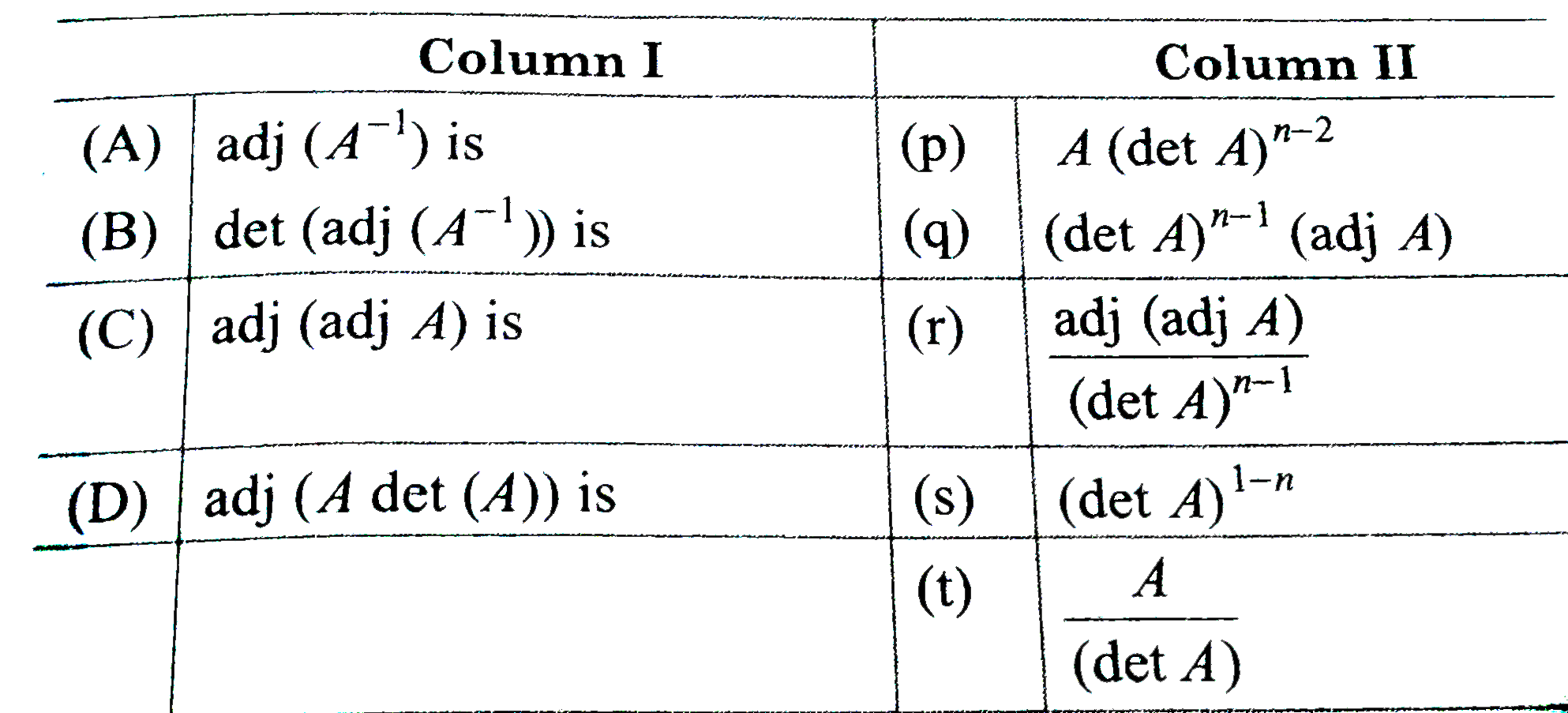Let A and B be two matrices of order n × n. Let A be non-singular and B be singular. Consider the following :
1. AB is singular
2. AB is non-singular
3. A−1 B is singular
4. A−1 B is non singular
Which of the above is/are correct ?
1 and 3
2 and 4 only
1 only
3 only
The correct Answer is:B
To solve the problem, we need to analyze the properties of the matrices A and B given that A is non-singular and B is singular.
1. Understanding Non-Singular and Singular Matrices:
- A matrix A is non-singular if its determinant is non-zero, i.e., det(A)≠0.
- A matrix B is singular if its determinant is zero, i.e., det(B)=0.
2. Analyzing the Product AB:
- We need to determine whether the product AB is singular or non-singular.
- Since A is non-singular, we know that det(AB)=det(A)⋅det(B).
- Given that det(B)=0, we have:
det(AB)=det(A)⋅0=0
- Therefore, AB is singular.
3. Analyzing the Matrix A−1B:
- Next, we need to check whether A−1B is singular or non-singular.
- Since A is non-singular, A−1 exists and is also non-singular.
- The determinant of the product A−1B can be calculated as:
det(A−1B)=det(A−1)⋅det(B)
- Since det(B)=0, we have:
det(A−1B)=det(A−1)⋅0=0
- Thus, A−1B is also singular.
4. Conclusion:
- From our analysis, we conclude:
- AB is singular (Statement 1 is correct).
- A−1B is singular (Statement 3 is correct).
- Therefore, Statements 2 and 4 are incorrect.
Summary of Correct Statements:
- Correct Statements: 1 and 3.
- Incorrect Statements: 2 and 4.
Final Answer:
The correct options are 1 and 3.
---
- A matrix A is non-singular if its determinant is non-zero, i.e., det(A)≠0.
- A matrix B is singular if its determinant is zero, i.e., det(B)=0.
- We need to determine whether the product AB is singular or non-singular.
- Since A is non-singular, we know that det(AB)=det(A)⋅det(B).
- Given that det(B)=0, we have:
det(AB)=det(A)⋅0=0
- Therefore, AB is singular.
- Next, we need to check whether A−1B is singular or non-singular.
- Since A is non-singular, A−1 exists and is also non-singular.
- The determinant of the product A−1B can be calculated as:
det(A−1B)=det(A−1)⋅det(B)
- Since det(B)=0, we have:
det(A−1B)=det(A−1)⋅0=0
- Thus, A−1B is also singular.
- From our analysis, we conclude:
- AB is singular (Statement 1 is correct).
- A−1B is singular (Statement 3 is correct).
- Therefore, Statements 2 and 4 are incorrect.
- Correct Statements: 1 and 3.
- Incorrect Statements: 2 and 4.
The correct options are 1 and 3.
Topper's Solved these Questions
Similar Questions
Knowledge Check
Let A and B be two matrices of order n×n. Let A be a non singular. Cosider the following.
AAB is a singularBAB is a non singularCA−1B is a singularDA−1B is non singularIf A, B are square matrices of order 3, A is non-singular and AB=0, then B is a
Anull matrixBunit matrixCsingular matrixDnon-singular matrixIf A, B are square matrices of order 3,A is non0singular and AB = O, then B is a
Anull matrixBsingular matrixCunit matrixDnon-singular matrix.
Let A,B,C be square matrices of the same order n. If A is a non singular matrix, then if AB=AC then B=C
View SolutionConsider the following statements:
I. If A=A. then A is singular matrix where A is the transpose of A.
II. If A is a square matrix such that A3=1, then A is non-singular.
Which of the above statement is/are correct ?
View SolutionIf A is non-singular matrix of order, n×n,

View SolutionIf A and B are non-singular matrices, then
View SolutionIf A is non-singular matrix and (A+I)(A−I)=0 then A+A−1= . . .
View Solution
